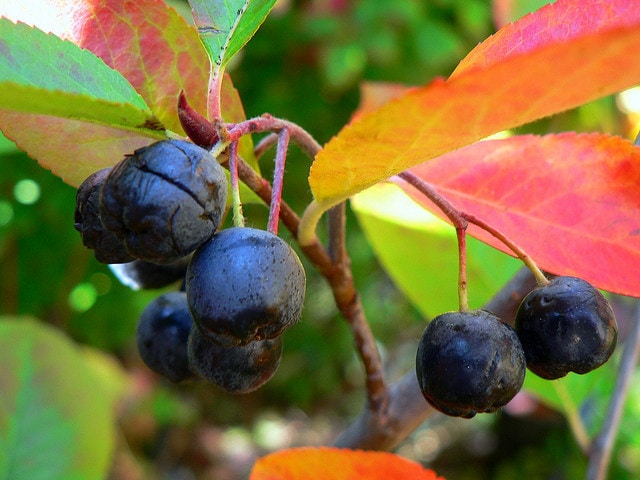The story of this multi-annual shrub, Aronia melanocarpa, leaves from eastern North America, where it originates. The locals of those places cultivated him over time for his longevity, strength and curative properties. Aronia shrub is part of the Rosaceae family and is recognized under the American names of Black Chokeberry or Redberry.
It was brought by the Russians from America to Europe, it is very resistant to cold, being cultivated even in Siberia. However, the results of scientific research have also contributed to the fame, which have revealed beneficial effects in the treatment of diabetes, cardiovascular disease and cancer. Due to its properties, the aronia was introduced into the Russian cosmonaut diet in 1959. There are two species of aronia, one with dark fruits (black scorpion) and another with red fruits.
Which nutrients contain?
Aronia contains active substances and other essential ingredients in their natural form, especially polyphenols and vitamins niacin, riboflavin (B2), folic acid, vitamins E, A, K, as well as minerals: potassium, iodine and phosphorus.
Superfruits of aronia have a very high content of antioxidants, much higher than blueberries (15 times larger), cranberry or pomegranates. They have a high content of proanthocyanins (found in grape seeds) and quinic acid (10 times larger than the cranberry)!
Vitamin P content (which helps fix vitamin C in the body) is higher than any other fruit (contains 5 times more vitamin P than grapes). Aronia fruit is a powerful solution against free radicals. The high percentage of polyphenols can reduce oxidative stress.
When can I introduce it into my baby’s diet?
Black poins are not allergenic and do not have contraindications, so they can be offered to the baby at the age of one, like most forest fruits.
As with any new food you enter into the baby’s diet, we advise you to seek advice from your doctor and follow the 4-day rule.
How do I choose and how do I keep aronia?
Aronia grows in mountain areas with wet soil and acid, where it can also be grown. Being resistant to cold, it lasts until late autumn. In trade, these fruits can be found in dehydrated or juice stores.
How to use and eat aronia?
They have bitter and astringent taste. But their freezing is “cut” by their bitter taste (reduces the amount of tannins) and gets a sweeter taste.
Aronia fruit can also be used for cakes, as other berries, smoothies and jams or jams can also be prepared. Also, fruits are extracted a strong pigment that is used in the food industry.
Fruits can easily be dried at home if we dry them on paper in a thin layer. Dried fruits can be rehydrated in the winter and then used just like fresh fruit.
Of the dried fruits can also be tea, but by boiling some of the vitamins will be destroyed. Therefore, the most suitable for the preservation of fruit properties is the aronia juice. If obtained by cold pressing, the aronia juice retains its antioxidant properties and vitamin content. In addition, the juice is advised to be eaten half an hour before a meal, 50 ml three times a day for 20-30 days (vitamin P daily requirement is 50-100 mg) for at most one month.
Sources:
http://en.wikipedia.org/wiki/Aronia
http://http://www.goodguide.com/ingredients/287699-aronia-berry?category_id=255918-food
Photo by: http://flic.kr/p/7de2Yn
